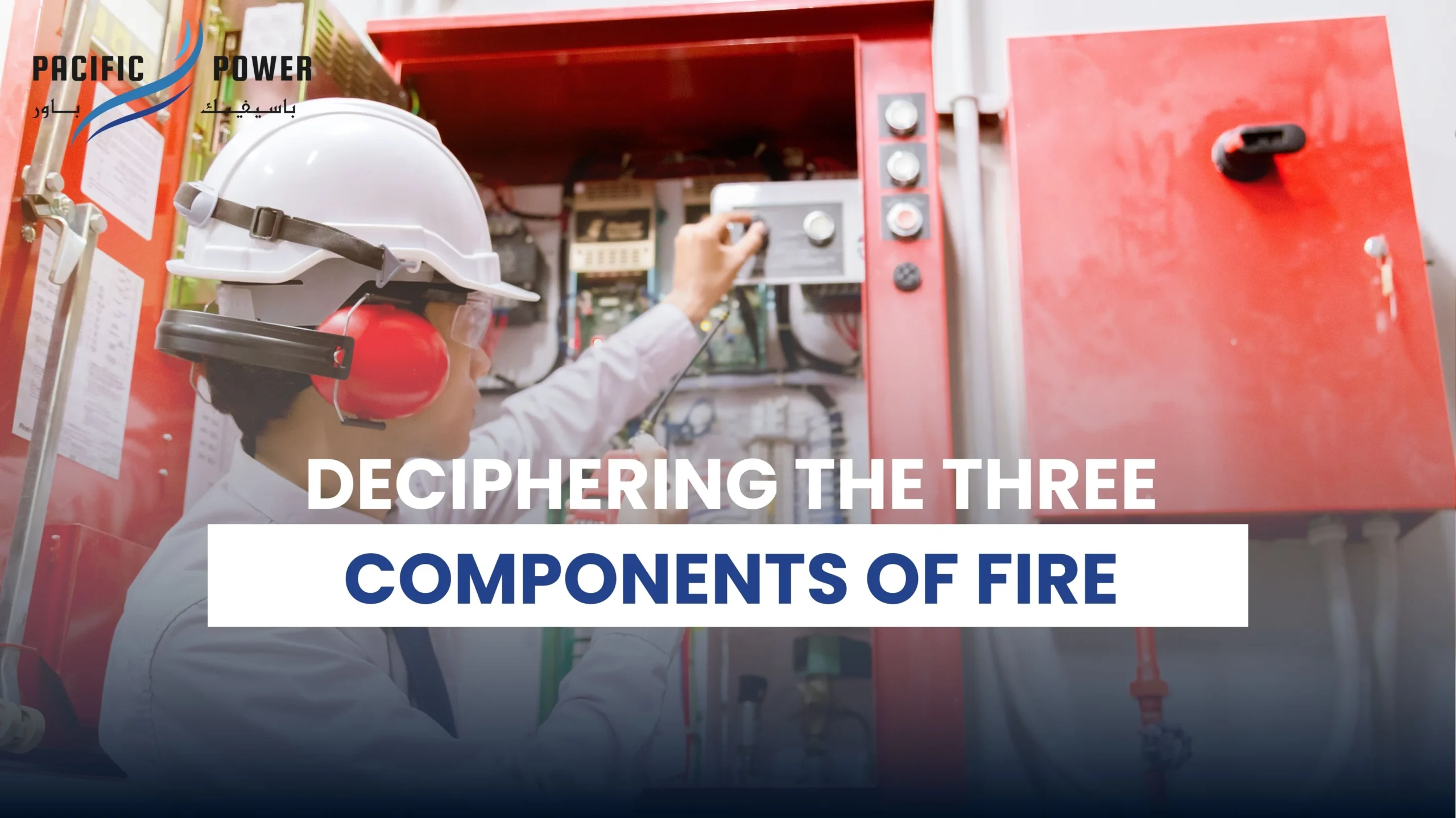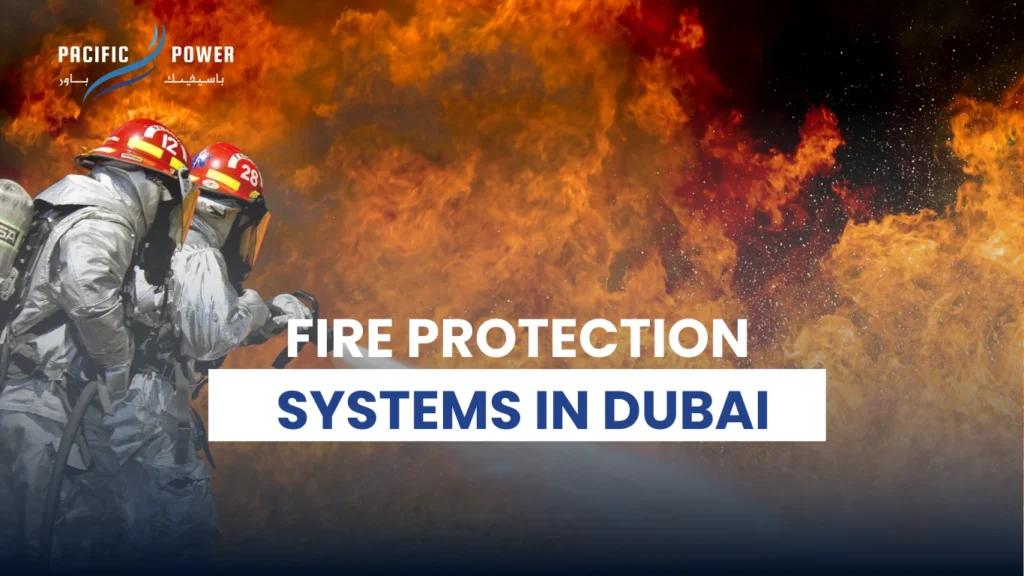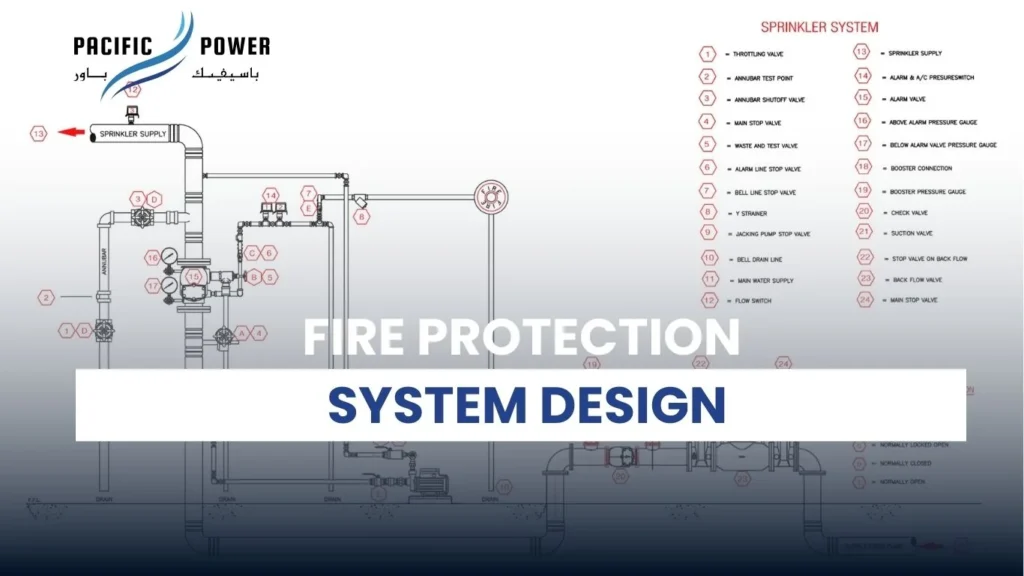
Table of Contents
The Combustion Triangle: Deciphering the Three Components of Fire
Fires are formidable forces capable of destroying lives, homes, and communities. At the heart of fire science is the Combustion Triangle, a simple model that demonstrates the three critical components needed for fire: heat, fuel, and oxygen.
By understanding these elements, we can develop more effective strategies to combat fires before they cause damage. Removing one of these components can extinguish a fire, providing a crucial tactic in fire safety operations.
Pacific Power stands out as a reputable fire safety contractor, offering expert services in understanding and applying the principles of the Combustion Triangle to safeguard against the devastating impact of fires.
What is a Fire Triangle?
The fire triangle is a model used to understand the necessary components for most fires to ignite and sustain. It identifies three essential elements: fuel, heat, and oxygen.
Fuel serves as the combustible material, heat provides the energy required to start the combustion process, and oxygen supports the chemical reactions that occur during burning.
By effectively managing or removing one of these elements, the possibility of a fire starting or continuing can be drastically reduced, enhancing fire prevention and safety strategies.
The Three Major Components of the Fire
In the following lines, we will explore the complete Fire Triangle, unveiling the three major components essential for combustion. Understanding these elements is key to mastering fire control and safety measures.
1.Heat
Heat is the energy source that initiates the combustion process in a fire. It raises the temperature of the fuel to its ignition point, causing it to release gases that react with oxygen to create flames.
The role of heat in a fire is akin to a trigger, setting off the reaction that enables burning to occur. Sufficient heat ensures that the fire can ignite and continue burning. Without it, the chemical reactions would cease, resulting in the fire being extinguished.
Flashpoint Vs. Firepoint
The flashpoint is the lowest temperature at which a material can vaporize to form an ignitable mixture in the air. The flashpoint alerts to the potential danger of ignition.
Firepoint, a slightly higher temperature, is when the material consistently catches fire and burns. The fire point indicates sustained burning.
Being aware of these two metrics allows for appropriate handling and storage of flammable materials, and informs safety protocols to prevent accidental ignition or control an existing fire.
Common Sources of Heat
Heat, a critical fire component, can emerge from multiple sources:
Natural Sources:
- Lightning strikes
- Volcanic activity
- Sunlight, especially when concentrated (like with a magnifying glass)
- Heat generated from decomposition or friction in nature
Man-Made Sources:
- Open flames (candles, matches, lighters)
- Electrical equipment (short circuits, overloaded outlets)
- Mechanical friction (brake pads, machine parts)
- Chemical reactions (exothermic reactions, battery leaks)
2.Fuel
Fuel is any material that, when exposed to heat, undergoes combustion, releasing energy in the form of fire. It acts as the sustenance for the fire, enabling it to light up and continue burning. The role of fuel in a fire is essentially that of a consumable energy source. Without fuel, a fire cannot initiate or sustain itself, as it requires a continuous supply of combustible material.
The presence and characteristics of fuel determine the fire’s behavior, influencing its spread, heat output, and smoke production.
Different types of fuels
Natural Fuels:
- Wood
- Coal
- Oil
- Natural Gas
Synthetic Fuel Materials:
- Biofuels
- Synthetic Gas
- Hydrogen Fuel
- Plastics Derived Fuel
Flashover vs. Backdraft
A flashover is a dangerous phenomenon where all combustible materials in a room ignite almost simultaneously due to extreme heat, dramatically increasing the fire’s intensity and making it nearly impossible to escape or control the blaze effectively.
In contrast, a backdraft occurs when a fire has consumed most of the available oxygen in an enclosed space, and the introduction of fresh oxygen (from opening a door or window) leads to a sudden and violent explosion. This explosion can cause significant damage
3.Oxygen
Oxygen plays a crucial role in fire by serving as an oxidizing agent, facilitating the breakdown of fuel into volatile compounds that ignite more readily. As it combines with fuel, it releases heat and light, intensifying the fire. Without oxygen, combustion cannot occur, highlighting its essential role in sustaining flames.
How the Amount of Oxygen Can Influence the Intensity of the Flame?
The amount of oxygen available significantly influences a flame’s intensity. Oxygen is a key element in the combustion process; a higher concentration boosts a fire’s energy, leading to a hotter, brighter flame.
Conversely, limited oxygen supply results in a weaker, cooler flame, as the combustion process is stifled. A balanced oxygen level ensures efficient fuel consumption, creating an optimal burn rate and flame intensity.
Thus, controlling oxygen availability can directly manipulate a flame’s heat output, color, and overall behavior.
The Chemical Chain Reaction
A chemical chain reaction in a fire involves a series of self-sustaining exothermic reactions where heat causes fuel molecules to break down, releasing volatile gases that react with oxygen, generating more heat.
This heat then decomposes additional fuel, continuing the cycle. The reaction’s self-propagating nature relies on the constant presence of fuel, oxygen, and sufficient heat. Disrupting any of these elements halts the chain reaction, extinguishing the fire.
Combustion: The Chemical Reaction
Combustion is a complex chemical reaction that occurs when a substance reacts rapidly with oxygen, releasing heat, light, and various by-products like carbon dioxide and water vapor. This exothermic process is fundamental to fires, providing the energy that fuels their intensity.
For combustion to be initiated and sustained, three components are essential: a fuel source, oxygen, and an ignition source.
The precise nature of the reaction can vary depending on the materials involved but always involves oxidizing the fuel, transforming chemical potential energy into thermal energy.
The Role of Free Radicals in Fire
Free radicals play a pivotal role in the propagation of fire, acting as highly reactive intermediates in the combustion process. They are formed when the high heat of a fire causes molecules to split, leaving atoms with unpaired electrons.
These radicals rapidly react with surrounding materials, perpetuating the chain reactions that sustain combustion.
By continuously initiating new reaction pathways, free radicals contribute to the spread and maintenance of fire, making them a critical component in the complex chemistry of flames.
How to Effectively Extinguish a Fire?
To effectively extinguish a fire, it’s crucial to disrupt one of the elements of the fire triangle: heat, fuel, or oxygen. Water is commonly used to remove heat and cool the burning material below its ignition temperature.
Fire extinguishers often disrupt the chemical reaction or displace oxygen, halting the fire. Blankets or sand can smother flames, cutting off oxygen. Understanding the type of fire and choosing the appropriate method is vital for effective extinguishment and preventing re-ignition.
Fire Extinguishers as a Practical Tool for Putting Out Fire
Fire extinguishers are practical tools designed for quick and effective firefighting. They contain extinguishing agents tailored to different types of fires.
Upon activation, the pressurized contents are released, targeting specific fire elements. Water-based extinguishers cool burning materials, while dry chemicals and foams inhibit the chemical reactions sustaining the fire. Carbon dioxide extinguishers suffocate the fire by displacing oxygen.
Proper use involves aiming the extinguisher at the fire’s base, following the PASS technique: Pull, Aim, Squeeze, and Sweep.
Some Other Common Agents for Extinguishing Fires
Beyond traditional fire extinguishers, several other common agents are effective for extinguishing fires, each suited to specific types of fires.
- Water is the most common ideal for Class A fires involving ordinary combustibles.
- Foams create a barrier between the fire and its fuel source, smothering the flames.
- Dry chemicals interrupt the chemical reaction of fire, used in Class B and C fires.
- Carbon Dioxide (CO2), by displacing oxygen, effectively extinguishes Class B and C fires.
- Sand can also be used, particularly on small metal fires, by smothering and isolating the fuel from oxygen.
- Aerosol agents release microparticles that chemically interrupt combustion, ideal for various fires, including electrical, by covering hard-to-reach areas without residue, protecting equipment, and being highly effective in enclosed spaces.
How Do Firefighters Extinguish Huge Fires?
To extinguish huge fires, firefighters employ a combination of strategies and tools designed for large-scale incidents. They use water hoses and fire retardants dropped from aircraft to cover extensive areas rapidly, aiming to lower temperatures and halt the spread of flames.
Firebreaks are created by removing vegetation or using controlled burns, depriving the fire of fuel. Specialized equipment like high-volume pumps and air tankers are critical for delivering vast amounts of water and retardant.
Teamwork, planning, and the use of advanced technology are essential in these efforts to efficiently and effectively control and extinguish large fires.
Water Mist Suppression System And is it Useful in Suppressing Fires?
Water mist suppression systems disperse fine droplets of water that, by cooling the fire and displacing oxygen, extinguish flames efficiently. These tiny droplets absorb more heat and cover a larger area than conventional sprinkler systems, making them highly effective for suppressing fires, especially in confined spaces.
Water mist systems are useful in various settings, including data centers, marine environments, and healthcare facilities, as they cause minimal water damage. They’re particularly effective against Class A fires and are gaining traction as a cleaner alternative to chemical suppressants in Class B and C fires.
Pacific Power as a Fire Service Expert
Pacific Power, as a utility company, focuses on energy provision rather than firefighting. However, they play a vital role in fire prevention by maintaining electrical infrastructure to prevent sparks that could start wildfires.
In high-risk areas, they might implement power shutoffs, vegetation management, and grid upgrades to reduce hazards.
They also work with fire services to restore power safely after fires. Their expertise lies more in energy management and fire risk mitigation rather than direct fire suppression operations.
Conclusion
In conclusion, effective fire suppression encompasses a broad spectrum of agents and strategies, tailored to combat specific types of fires. From traditional methods like water and foam to innovative approaches like aerosol extinguishers and water mist systems, the key is using the right tool for each fire class. Utilities like Pacific Power contribute indirectly through proactive risk management and infrastructure maintenance to prevent fires, especially in wildfire-prone areas.
Free radicals are unstable and highly reactive atoms or molecules with unpaired electrons seeking to pair up for stability. They participate in chemical reactions in various contexts, including biological processes and combustion. In fires, they facilitate the spreading of flames by enabling chain reactions that break down fuels and continue the burning process.
The fire triangle consists of three essential elements – heat, fuel, and oxygen. All three must be present for a fire to ignite and sustain. Heat provides the energy necessary to start the combustion process, fuel acts as a combustible substance, and oxygen supports the chemical reactions that occur during burning.
Water extinguishes fire by targeting the heating element of the fire triangle. It absorbs the heat upon contact, as it requires significant energy to transition from a liquid to a gaseous state (evaporation). This heat absorption lowers the temperature of the fuel to below its ignition point, thereby halting combustion.
Common sources of heat in the context of the fire triangle include open flames from matches or lighters, sparks from electrical devices or friction, hot surfaces such as stove tops, and exothermic chemical reactions. These sources can provide the necessary energy to raise the temperature of the fuel to its ignition point.
In the fire triangle, fuel can be any combustible material such as wood, textiles, petrochemicals, gases like propane, and even dust particles. These materials can sustain a fire by continuing to oxidize, which releases heat and perpetuates the combustion process when heat and oxygen are available.
Water extinguishes fire by targeting the heating element of the fire triangle. It absorbs the heat upon contact, as it requires significant energy to transition from a liquid to a gaseous state (evaporation). This heat absorption lowers the temperature of the fuel to below its ignition point, thereby halting combustion.
Understanding the fire triangle is crucial for fire prevention and suppression. It provides insight into the conditions necessary for fires to start and sustain. By effectively managing or eliminating one or more of these elements, individuals and fire safety professionals can devise strategies to prevent or extinguish fires, ensuring safety.
The fire tetrahedron represents an advancement over the fire triangle, introducing a fourth element: the chemical chain reaction involved in combustion. This model is useful for understanding the role of specific extinguishing agents that inhibit the chain reactions that occur during fire, thereby contributing to the extinguishment of the blaze.

